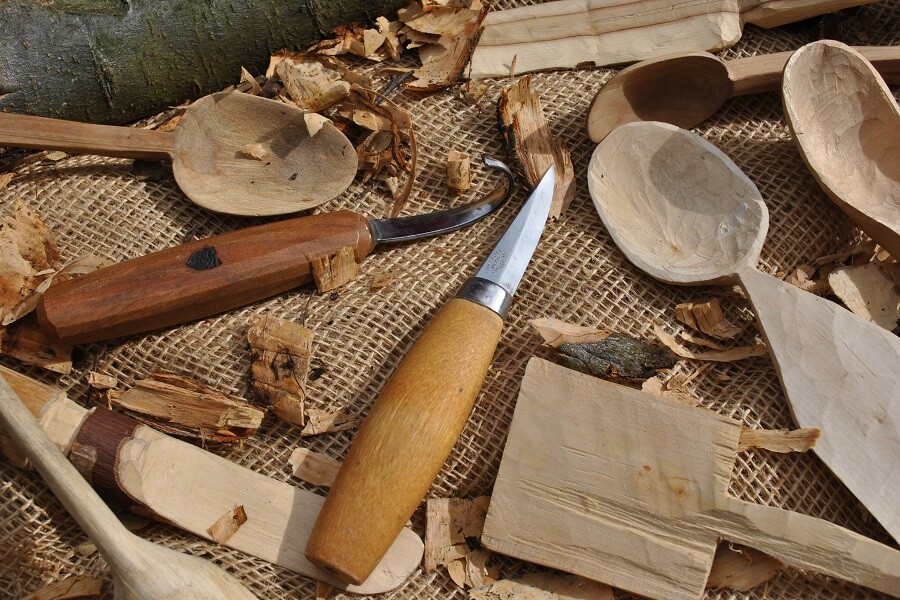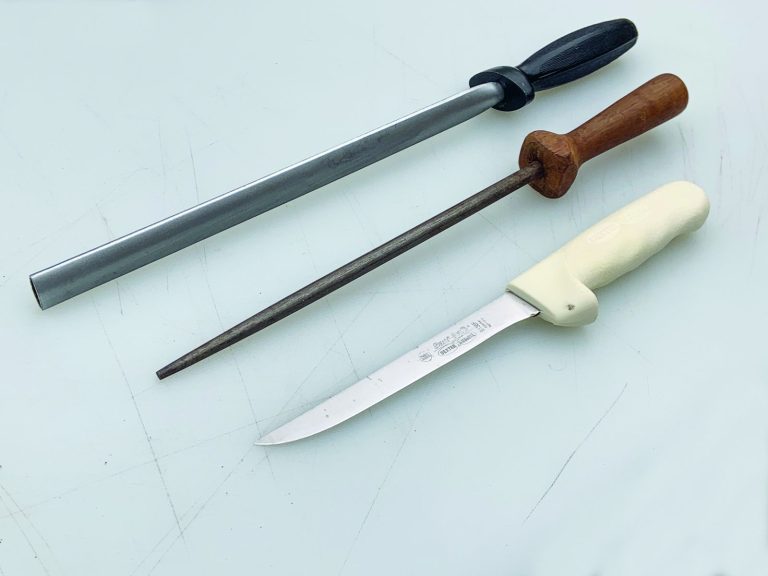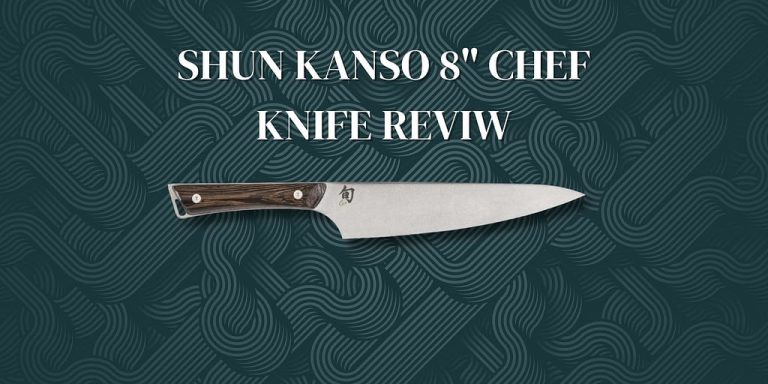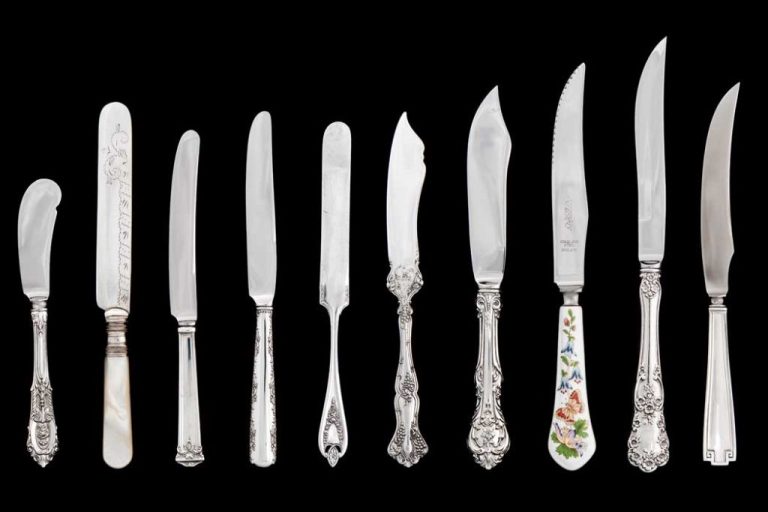Whittling And Woodcraft With Camping Knives
Whittling and woodcraft with camping knives offers a practical and versatile way to create functional and decorative items while camping.
The Art Of Whittling: A Timeless Craft
Discover the timeless craft of whittling and woodcraft with camping knives. Unleash your creativity and bring life to a simple piece of wood as you carve intricate designs and shapes, creating unique masterpieces. Start your whittling journey today and experience the satisfaction of crafting something beautiful by hand.
Whittling is not just a hobby; it’s an art form that has stood the test of time. The delicate craft of carving wood with a camping knife is as mesmerizing today as it was centuries ago. So, let’s delve into the origins, history, traditional tools, and techniques that make up the captivating world of whittling.
Origins And History Of Whittling
- Whittling can trace its roots back to ancient civilizations, with evidence of intricate carvings found in various cultures worldwide.
- It was a popular pastime among sailors during long voyages, when they would craft intricate figures and objects from wood.
- Whittling gained significant popularity during the Great Depression, as it was seen as a low-cost way to create useful and decorative items.
- Today, this timeless craft continues to capture the imaginations of artisans and hobbyists alike.
Traditional Tools And Techniques Used In Whittling
- Pocket Knife: A trusty pocket knife is the quintessential tool for any whittler. It provides versatility, control, and precision, allowing for intricate designs to be brought to life.
- Cutting Techniques: Various cutting techniques, such as the push stroke, pull stroke, and scoring, are employed to achieve the desired shapes and textures.
- Chip Carving: This technique involves removing small chips of wood to create intricate patterns and designs.
- Knife Sharpening: Maintaining a sharp blade is essential in whittling. Various sharpening methods, such as honing stones and strops, are used to achieve optimal results.
Whittling is more than just a hobby; it is a way to connect with nature and create something beautiful out of a simple piece of wood. Whether you’re a seasoned whittler or just starting your woodcraft journey, the art of whittling will continue to captivate and inspire for generations to come.
So, grab your camping knife, find a cozy spot in nature, and let your creativity flow as you join the ranks of artisans who have been whittling their way through history.
Essential Camping Knives For Whittling And Woodcraft
Discover the must-have camping knives for whittling and woodcraft. Perfect for outdoor enthusiasts, these knives offer precision and durability for all your crafting needs.
Camping trips offer the perfect opportunity to indulge in some outdoor activities like whittling and woodcraft. Whether you’re a seasoned whittler or just starting out, having the right camping knife is essential for a successful craft session. In this section, we’ll explore the different types of camping knives and their uses, as well as what to consider when choosing the perfect tool for your whittling adventures.
Choosing The Right Camping Knife For Whittling:
- Blade Material: Look for a camping knife with a blade made of high-quality stainless steel or carbon steel. Stainless steel blades are resistant to corrosion, while carbon steel ones are known for their excellent sharpness.
- Blade Length: Opt for a knife with a blade length of around 3 to 4 inches. This size strikes a good balance between versatility and portability.
- Blade Shape: A camping knife with a drop point or a clip point blade shape is ideal for whittling and woodcraft. These shapes provide precision control and are less prone to accidental piercing.
- Handle Design: Pay attention to the handle design, as it affects your grip and overall comfort. Look for a knife with an ergonomic handle made of durable materials like wood, G-10, or micarta.
- Locking Mechanism: Consider a camping knife with a reliable locking mechanism such as a liner lock or a frame lock to ensure the blade remains securely in place during use.
Different Types Of Camping Knives And Their Uses:
- Whittling Knife: Designed specifically for whittling, these knives usually have a thin, narrow blade that allows for intricate carving. They are often single-edged, making it easier to control the direction of the cut.
- Folding Knife: A versatile option for camping and outdoor activities, folding knives feature a folding blade that can be safely tucked away when not in use. These knives come in various blade shapes and sizes and are easy to carry around.
- Fixed Blade Knife: Known for their durability and strength, fixed blade knives have a solid full tang construction. They offer excellent control for heavy-duty tasks and are more reliable in demanding conditions.
- Multi-tool Knife: Ideal for campers who need a range of tools at their disposal, multi-tool knives are equipped with multiple blades, screwdrivers, saws, and other handy tools in one compact device. They are a great choice for those who enjoy different activities besides whittling.
Remember, the right camping knife for whittling is subjective and depends on your personal preferences and intended use. Consider the specific features mentioned above to help you find the perfect tool for your next camping adventure. So, let your creativity flow and enjoy the art of whittling in the great outdoors!
Getting Started With Whittling And Woodcraft
Discover the art of whittling and woodcraft with camping knives. This beginner’s guide provides essential tips and techniques for getting started, making it easy to create beautiful wooden creations while enjoying the great outdoors.
Whittling and woodcraft can be a rewarding and creative hobby that allows you to carve beautiful objects from wood. Before you dive into this craft, it’s essential to familiarize yourself with some safety precautions and learn basic whittling cuts and techniques.
By following these guidelines, you’ll be on your way to creating stunning wooden masterpieces in no time.
Safety Precautions And Best Practices For Beginners
When getting started with whittling and woodcraft, it’s crucial to prioritize safety to prevent any accidents or injuries. Here are some safety precautions and best practices you should keep in mind:
- Always wear protective gear, including safety goggles and gloves, to protect yourself from potential injuries.
- Choose a well-ventilated area to work in, as wood dust can be harmful if inhaled.
- Make sure your carving knife is sharp. Dull blades can slip, causing accidents.
- Keep your workspace clean and organized to avoid any potential injuries from stray woodchips or clutter.
- Ensure you have a stable work surface, such as a workbench, to prevent slips or falls.
- Use proper carving techniques and avoid applying excessive force to reduce the risk of mishaps.
- Avoid distractions while working on your projects. Focus and concentration are key to preventing accidents.
- Do not carve towards your body. Always carve in the opposite direction to avoid any injuries.
- Take breaks every now and then to prevent fatigue and maintain steady hands.
- Lastly, be patient and take your time. Rushing can lead to careless mistakes.
Basic Whittling Cuts And Techniques
Now that you have your safety precautions in place, let’s explore some basic whittling cuts and techniques that every beginner should know:
- Straight Cut: The most basic whittling cut, performed by pushing the blade straight into the wood, creating a straight and smooth surface.
- V-Cut: This cut forms a V-shaped indentation and is achieved by making two diagonal cuts that meet at a point.
- Roughing Cut: Used to remove excess material quickly, a roughing cut involves making long parallel cuts across the grain of the wood.
- Detailing Cut: Detailing cuts are done with precision to add intricate details to your carving. These cuts are shallow and require careful control of the blade.
- Stop Cut: A stop cut is made by carefully cutting into the wood at a specific point to create a defined edge or stop for another cut.
- Slicing Cut: Similar to slicing through a piece of bread, this cut involves moving the blade in a sweeping motion along the wood’s surface to remove thin layers.
- Scooping Cut: Perfect for creating hollows or curves, the scooping cut involves using the blade to scoop out wood, resulting in a concave shape.
- Push Cut: This cut is performed by pushing the blade away from you while applying controlled pressure. It helps in shaping and refining your carving.
By mastering these basic cuts and techniques, you’ll have a solid foundation to unleash your creativity and embark on more intricate woodcraft projects.
Now that you have a grasp of the safety precautions and basic techniques, you’re ready to delve into the fulfilling world of whittling and woodcraft. Remember to start with simple projects, gradually building your skills and confidence. So gather your tools, select a suitable piece of wood, and let your imagination guide your hands in transforming simple blocks of wood into unique works of art.
Happy carving!
Whittling Projects For Camping Enthusiasts
Discover the art of whittling and woodcraft using camping knives. Explore a range of whittling projects perfect for camping enthusiasts, creating unique and practical items from wood. Gain new skills while immersing yourself in nature.
Whittling, the art of carving wood with a knife, is a skill that has been practiced for centuries. For camping enthusiasts, it offers a wonderful way to pass the time while enjoying the peace and solitude of nature. Whether you’re a seasoned whittler or just starting out, there are plenty of projects that you can undertake with your camping knife.
We’ll explore some popular whittling projects that are perfect for camping enthusiasts.
Carving A Wooden Spoon Or Spatula
- A wooden spoon or spatula can be a useful tool to have when cooking outdoors. By carving your own, you can customize the shape and size to suit your needs.
- Start by selecting a piece of wood that is suitable for carving. Hardwoods like maple or cherry are great choices.
- Begin by roughing out the basic shape of the spoon or spatula using your camping knife. Take your time and be mindful of safety.
- Once you have the rough shape, use your knife to refine the details and smooth out any rough edges.
- Sand the spoon or spatula to a smooth finish, and apply a food-safe finish if desired.
Creating Handcrafted Hiking Sticks And Walking Canes
- A handcrafted hiking stick or walking cane can be both functional and aesthetically pleasing. It can provide support and stability during hikes and walks in nature.
- Look for a straight piece of wood that is sturdy and comfortable to hold. Birch, oak, or hickory are good choices.
- Start by removing any bark and sanding the wood to a smooth finish. You can leave the natural wood or apply a finish to protect it.
- Use your camping knife to carve designs, patterns, or personal symbols into the wood. Let your creativity guide you.
- Consider adding a handle or grip to the hiking stick or walking cane for added comfort.
Making Wooden Fishing Lures
- Making your own wooden fishing lures can be a rewarding and cost-effective way to enhance your fishing experience.
- Begin by selecting a wood that is suitable for carving, such as cedar or basswood. You can also repurpose old wooden objects like dowels or scrap wood.
- Carve and shape the wood to resemble the type of fish or bait you want to mimic. Pay attention to the details, such as scales or fins.
- Use your camping knife to create grooves or indentations that will help the lure move and create a realistic swimming action in the water.
- Finish the lure by painting it with durable, waterproof paint and sealing it with a topcoat.
Whittling allows camping enthusiasts to unleash their creativity and create functional and beautiful objects from wood. Whether you choose to carve a wooden spoon, craft a hiking stick, or make fishing lures, the possibilities are endless. So grab your camping knife, find a quiet spot in nature, and let your imagination guide your hands as you embark on your next whittling project.
Happy carving!
Combining Whittling With Camping: Practical Applications
Discover the practical applications of combining whittling and camping, utilizing the versatility of camping knives for woodcraft. Uncover a world of creativity and resourcefulness while enjoying the great outdoors.
Whittling And Woodcraft With Camping Knives
Whittling, the art of carving wood, is not only a popular hobby but also a practical skill to have while camping. Combining the art of whittling with camping can enhance your outdoor experience and provide you with useful tools and decorative items.
In this section, we will explore the practical applications of whittling in a camping setting.
Carving Campsite Utensils And Tools:
- Carving a spoon: Whittle a spoon from a piece of wood to enjoy a rustic dining experience at your campsite. Use a camping knife to shape the spoon’s bowl, handle, and edges.
- Making a spatula: Craft a wooden spatula for flipping pancakes or burgers on the campfire grill. Whittle the desired shape and size, giving it a comfortable handle.
- Carving a butter knife: Create a wooden butter knife for spreading joy on your morning toast or bagels. Whittle a smooth and sturdy blade, ensuring it is safe to use.
Crafting Custom Tent Pegs And Stakes:
- Wooden tent pegs: Improve your camping experience by carving your own tent pegs. Use a camping knife to shape sturdy and unique pegs that can easily penetrate the ground and secure your tent.
- Whittled stakes: When setting up camp or creating a shelter, whittle stakes from wood to secure tarps, ropes, or other camping gear. Customize the length and thickness based on your needs.
Creating Decorative Campfire Implements:
- Whittled fire-starting tools: Get creative and whittle your own fire-starting tools, such as a fire striker or a bow-drill kit. These personalized tools can add a touch of uniqueness and authenticity to your campfire experiences.
- Decorative hiking staff: Transform a simple wooden staff into a decorated masterpiece. Use your camping knife to carve intricate designs, patterns, or symbols that represent your adventures and memories.
Remember, whittling can be a relaxing and enjoyable activity while camping, but always prioritize safety. Ensure that you are using sharp and well-maintained camping knives, follow proper whittling techniques, and be mindful of your surroundings. Get creative, explore the possibilities, and make your camping experience truly one-of-a-kind with the art of whittling.
Tips For Maintaining And Sharpening Camping Knives
Maintaining and sharpening camping knives is crucial for whittling and woodcraft activities. Follow these tips to keep your knives in top condition for a smooth and enjoyable camping experience.
Whittling and woodcraft with camping knives can be a fulfilling and engaging hobby for outdoor enthusiasts. To ensure the longevity and effectiveness of your camping knives, proper maintenance and sharpening are essential. This section will provide valuable tips for maintaining and sharpening your camping knives, allowing you to enjoy their functionality for years to come.
Proper Cleaning And Care For Camping Knives:
- Always clean your camping knife after each use to prevent rust and corrosion.
- Use mild soap and warm water to wash the blade, handle, and other components of the knife.
- Never use harsh chemicals or abrasive materials that can damage the knife’s surface.
- Dry the camping knife thoroughly with a clean cloth to avoid moisture build-up.
- Store the knife in a dry and secure place to prevent accidents and maintain its sharpness.
Sharpening Techniques For Maintaining A Sharp Edge:
- Regularly sharpen your camping knife to ensure optimal performance.
- Use a sharpening stone or honing rod to sharpen the blade.
- Hold the knife at a 20-degree angle and glide the blade along the sharpening surface.
- Apply light and consistent pressure during the sharpening process.
- Maintain a steady motion and repeat the process on both sides of the blade.
By following these tips for cleaning, caring, and sharpening your camping knives, you can extend their lifespan and maintain their sharpness. Remember, a well-maintained knife is an indispensable tool for enjoyable whittling and woodcraft adventures in the great outdoors.
Safety Tips And Precautions For Whittling And Camping
Discover essential safety tips and precautions for whittling and camping with camping knives. Learn how to stay safe and enjoy the art of whittling and woodcraft in the great outdoors.
Ensuring A Safe And Clean Work Area While Whittling:
- Clear the work area of any debris or clutter to reduce the risk of accidents or injuries.
- Make sure you have sufficient space to comfortably work with your camping knife.
- Use a stable surface, such as a sturdy table or workbench, to provide a secure base for your whittling activities.
- Keep all other objects, especially sharp tools and equipment, away from your work area to avoid any accidental injuries.
- Ensure good lighting in your work area to help you see what you’re doing and reduce the risk of mistakes.
Fire Safety Guidelines For Outdoor Whittling And Woodcraft Activities:
- Choose a safe and designated area for your outdoor whittling and woodcraft activities, away from flammable objects and combustible materials.
- Have a fire extinguisher nearby in case of emergencies, and make sure you know how to use it properly.
- Keep a bucket of water or sand readily available to extinguish small fires or embers.
- Never leave a fire unattended, and always fully extinguish it before leaving the area.
- Be aware of any local fire restrictions or regulations and adhere to them strictly.
Remember, safety should always be a top priority when engaging in whittling and woodcraft activities. By following these safety tips and precautions, you can ensure a safe and enjoyable experience while pursuing your passion for camping and craftsmanship. Happy whittling!

Credit: www.davidwillis.info
Inspiring Whittling And Woodcraft Artists To Follow
Discover the talented whittling and woodcraft artists who excel in the art of creating remarkable creations using camping knives. Explore their inspiring work and get inspired to embark on your own woodworking journey.
Profiles And Showcases Of Renowned Whittling Craftsmen/Women
Whittling and woodcraft are age-old practices that have captivated artists and enthusiasts for generations. In this section, we will explore the profiles and showcases of renowned whittling craftsmen and women who have honed their skills and created astonishing works of art.
These artists not only inspire others with their mastery but also showcase the unlimited possibilities of whittling.
- Chris Lubkemann: Chris Lubkemann is a renowned whittling artist known for his incredible talent and creativity. With his artistic flair and attention to detail, he has carved intricate masterpieces that showcase the beauty and versatility of wood. Lubkemann’s work has been featured in numerous exhibitions and publications, garnering him a dedicated following of aspiring whittlers.
- Mary May: Mary May is a highly skilled woodcarver and whittler who has made a name for herself with her exceptional craftsmanship. With a focus on traditional woodcarving techniques, May’s work exudes elegance and finesse. She has shared her expertise and passion through teaching and has become an influential figure in the whittling community.
- Chris Pye: Chris Pye is a world-renowned woodcarver, teacher, and author who has transformed the way people perceive whittling. Through his unique approach and innovative designs, Pye has elevated whittling to new heights. His dedication to teaching and sharing his knowledge has inspired countless artisans to delve deeper into the art of woodcraft.
- Emma Parkes: Emma Parkes is a talented woodcarver whose distinctive style and original designs have caught the attention of many. Her passion for nature shines through in her work, as she intricately carves animals and botanical motifs. Parkes’ ability to capture the essence and beauty of her subjects has made her an admired figure in the whittling community.
Online communities and resources to learn and share whittling projects:
- The Whittling Association: The Whittling Association is an online community that brings together whittling enthusiasts from around the world. It provides a platform for individuals to connect, share their projects, seek advice, and learn from experienced whittlers. The association offers a wealth of resources, including tutorials, patterns, and forums, making it an invaluable resource for beginners and seasoned artists alike.
- Woodcarving Illustrated: Woodcarving Illustrated is a comprehensive resource for woodcarvers and whittlers of all levels. The website features tutorials, articles, and galleries showcasing a wide range of whittling projects. It also hosts a vibrant forum where members can engage in discussions, ask questions, and share their creations. Whether you are a beginner looking for guidance or an experienced whittler seeking inspiration, Woodcarving Illustrated has you covered.
- Whittling Magazine: Whittling Magazine is a dedicated publication that celebrates the art of whittling. Each issue delves into the world of whittling, featuring profiles of artists, step-by-step tutorials, and tips and tricks for mastering the craft. The magazine serves as a source of inspiration and knowledge, keeping whittlers informed about the latest trends and techniques.
- YouTube Tutorials: YouTube has become a treasure trove of whittling tutorials, where talented artists share their techniques and projects. From basic knife handling to intricate carving methods, there is an abundance of valuable content available for those looking to learn or improve their skills. Whether you prefer following along with a tutorial or simply seeking inspiration, YouTube offers an endless array of whittling resources.
Whittling and woodcraft are not only creative outlets but also avenues for self-expression. By exploring the profiles of renowned whittling craftsmen and women and engaging with online communities and resources, aspiring artists can not only learn new techniques but also find inspiration to embark on their own whittling journeys.
The possibilities are boundless, and with passion and dedication, one can unlock their inner artist and create breathtaking works of art. So grab your camping knife and let your imagination run wild!
Frequently Asked Questions On Whittling And Woodcraft With Camping Knives
What Kind Of Knife Is Best For Whittling?
The best knife for whittling is a small, sharp carving knife with a comfortable handle.
Can You Whittle With Just A Knife?
Yes, you can whittle with just a knife; it is a popular and traditional method.
Is There A Difference Between Wood Carving And Whittling?
Wood carving and whittling are different techniques used in shaping wood with different tools.
What Is Wood Carving With A Knife Called?
Wood carving with a knife is called whittling.
Conclusion
Whittling and woodcraft with camping knives provide a unique blend of creativity, practicality, and the joy of working with natural materials. The intricate designs and sculptures that can be created through whittling not only serve as beautiful decorations but also hold sentimental value.
By using camping knives for whittling and woodcraft, enthusiasts can take their hobby on the go and immerse themselves in the serenity of nature. These versatile tools allow for precise carving and shaping, enabling individuals to bring their imagination to life.
Whether it’s creating a wooden spoon, a figurine, or a walking stick, the possibilities are endless. As we explore the art of whittling and woodcraft, we realize the potential for self-expression and the therapeutic benefits it offers. So, next time you venture into the great outdoors, don’t forget to pack your camping knife and embark on a journey of creativity and craftsmanship.
Happy whittling!







Today, I went to the beach with my children. I found a sea shell and gave it
to my 4 year old daughter and said “You can hear the ocean if you put this to your ear.” She placed the shell to her
ear and screamed. There was a hermit crab inside and it pinched her ear.
She never wants to go back! LoL I know this is entirely off topic but I had
to tell someone!
My brother recommended I might like this web site. He was
totally right. This post truly made my day. You cann’t imagine simply how
much time I had spent for this info! Thanks!
You can recommend to your friends to
May I simply just say what a relief to find somebody that truly knows what they are discussing over the internet.
You certainly realize how to bring a problem to light and make it
important. A lot more people should check this out and understand this side of your story.
It’s surprising you’re not more popular given that you definitely possess the gift.
Thank you